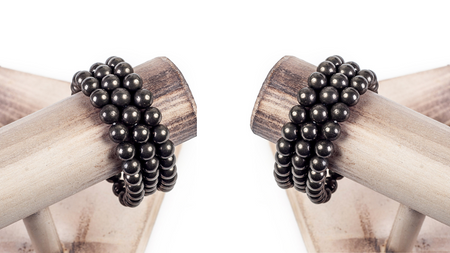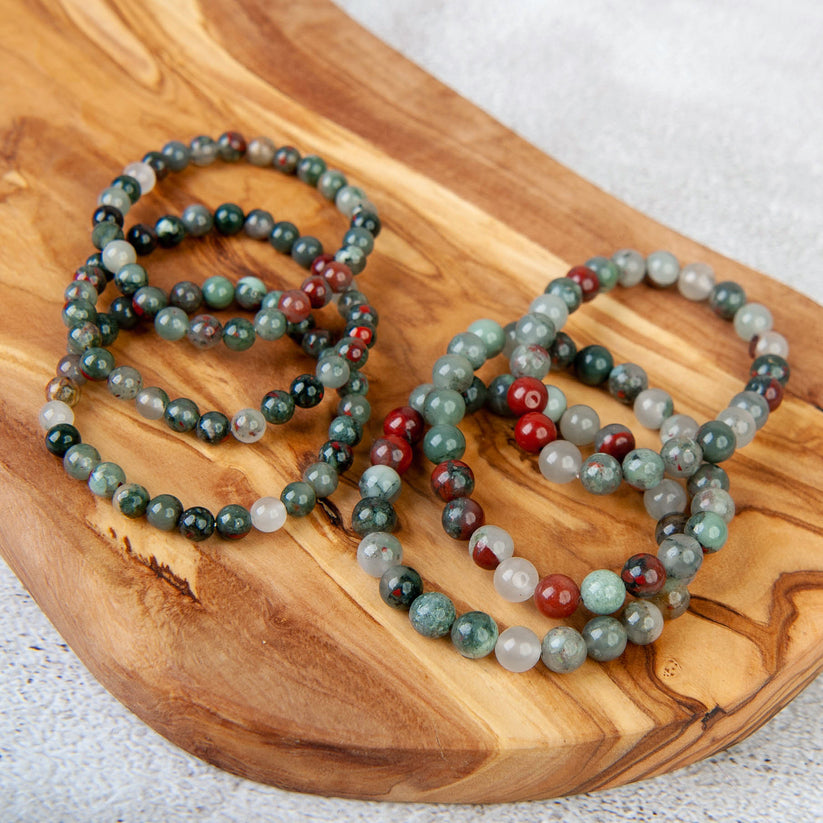Mineral Guide: Pyrite
Article by Rezolutions Design
FREE SCOOP OF TUMBLED STONES ON ORDERS OVER
Article by Rezolutions Design

You've probably come across the phrase, "all that glitters is not gold." Well, there's no mineral that perfectly sums up this phrase than pyrite. Commonly referred to as "fool's gold," pyrite is a mineral that looks like gold but is not gold. It has a warm yellow color and a bright metallic luster that makes it look like gold. But unlike gold, pyrite is so common that it can be found almost everywhere. So what exactly is pyrite, what are its uses, and how can you identify it? Let's find out.
Pyrite is a naturally occurring iron sulfide mineral that is generated as a result of the reaction between sulfur and iron that exist in sedimentary rocks such as sand and limestone. This stone is generally formed when magmas come in contact with metamorphic rocks and sedimentary rocks in hydrothermal veins.
Pyrite comes in various astonishing forms, but the most common ones have a warm yellow and glittery color that can be confused for gold. In some cases, pyrite can be found with quartz crystals, which makes them form delicate needle-like points. This stone can appear in cubic forms, twelve-sided, and octahedral. It can also appear in granular forms, flattened disks, or as elongated crystals.
Pyrite is, of course, much lighter than gold and can sometimes appear pale silver yellow and opaque when not exposed to oxygen. But when exposed to oxygen, it will lose its golden color and instead turns darker and more tarnished.
One of the main properties of pyrite is its brass-yellow color with a metallic luster and its unique gravity. Although it looks like gold, it's not as shiny as gold. Instead, it's a bit pale and has some slight shades of green and streaks of black.
Pyrite has a high specific gravity of 5.0 and hardness ranging from 6.0 to 6.5. This means that it's harder than gold, as well as other yellow minerals. It derives its name from the Greek word "pry," which means "fire." This name was given to it because it's sparkly and can be used to start a fire when struck against other stones, metal, or other material.
Pyrite is normally very easy to identify. Besides its brass-yellow and shiny look, it's generally structured in cubes, pyritohedron, or octahedron and often has striated faces. Pyrite is also brittle and will break into pieces under pressure.
Another way of identifying pyrite is by looking at its iron content. This mineral contains about 46% of iron. This is why it has a hardness of 6-6.5 on the Mohs scale, which is greater than that of most minerals. Pyrite also has unique extraterrestrial forms of crystals. This feature often gives it a sharp, lustrous, and nearly perfect look. If anything, some forms of pyrite are highly aesthetic and very perfect that they look like they've been carved into cubes by a skilled craftsman.
You can also identify pyrite by its dull and tarnished look when exposed to oxygen. In its natural form, pyrite appears golden, but will become darker when exposed to oxygen.
As we noted earlier, pyrite is nicknamed the "Fool's Gold" because it can easily be mistaken for gold. However, it's not the only mineral that looks like gold. So how can you identify pyrite? One of the main ways of identifying pyrite is to differentiate it from gold.
You can do this by looking at its structure. You have to keep in mind that pyrite generally appears in cubic structures, while gold does not. Of course, you can only identify such structures if you use a loupe or a 10x magnifier.
Another simple way of differentiating pyrite from gold is by using a magnet. Pyrite will stick to the magnet because of its high iron content, but gold will not. You can as well use the acid test to differentiate pyrite from gold. You can use a drop of nitric acid on pyrite. This acid won't have any effect on gold, but will turn pyrite black.
Again, pyrite is lighter than gold but harder than gold. This means that it cannot be scratched with a pocket knife or a fingernail. In other words, gold will leave a yellow streak when scratched on a surface, while pyrite will leave a greenish streak.
Pyrite is usually composed of iron and sulfur, but it's not an important source of those two minerals and doesn't offer any substantial elements of these two minerals. Although its huge content of iron can be extracted, these iron ores are already contaminated with sulfur, which reduces the strength of the iron ores. So what are the uses of pyrite?
Pyrite can be used as a gemstone. It can be used to create fashionable beads and necklaces. It can also be cut into cabochons or carved into various shapes that can be used for decoration purposes. The only downside of using pyrite to create jewelry is that it easily tarnishes and can quickly change color when exposed to oxygen.
Aside from its ornamental purposes, there are regions, especially in Latin America and Asia, where pyrite is polished and used as mirrors. It can also be used to produce sulfur dioxide for the paper industry. The fact that pyrite is sparkly and can produce fire makes it an important component and material in making flintlock firearms.
More importantly, pyrite can be used as an ore of gold. Pyrite and gold generally occur under the same conditions and in the same rocks. This means that you can find some very small deposits of gold on pyrite.
Pyrite can also be used as crushed stones in construction projects. But they shouldn't be used as the base material, as they can oxidize when exposed to air and moisture. This will in turn change their volume or reduce the strength of the building or roads.
Spain has always been the world's largest producer of pyrite. But it can also be found in other regions across the world such as Italy, China, Russia, Peru, Kazakhstan, and the United States.

Sign up now and enjoy a 10% discount on your first purchase. Start your mining adventure today!
Sign up now and enjoy a 10%
discount on your first purchase.
Sign up now and enjoy a 10%
discount on your first purchase.
© 2024 DECLAN'S MINING CO. - ALL RIGHTS RESERVED.
